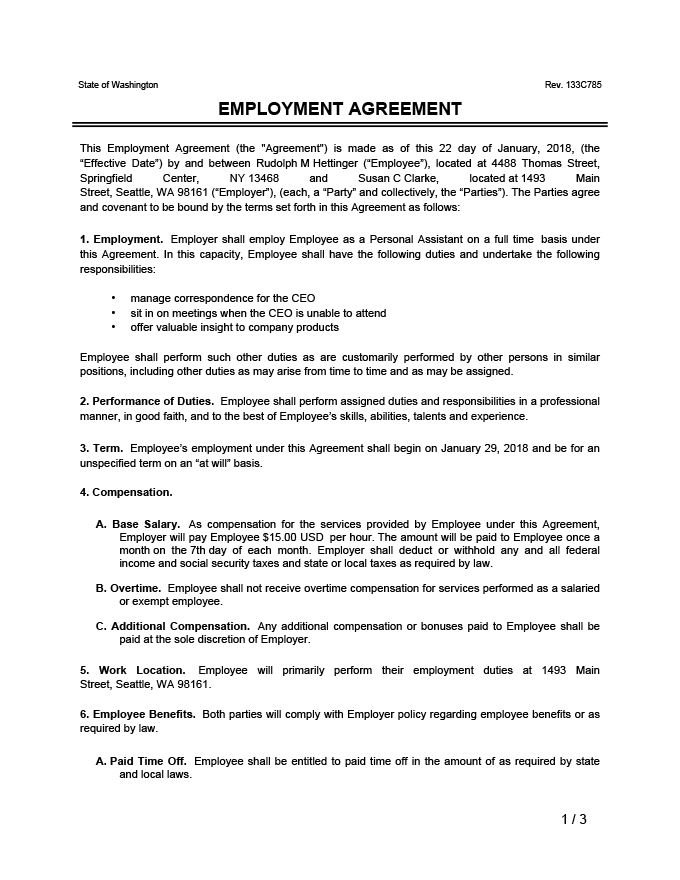Strategic Employment Contracts: Drafting for Success


Strategic Employment Contracts: Drafting for Success
Effective employment contract drafting is a critical aspect of human resources and legal practice, shaping the employer-employee relationship and mitigating potential disputes. In this article, we’ll explore key strategies and considerations for drafting employment contracts that align with the organization’s goals and foster a positive and legally sound work environment.
Understanding the Parties’ Needs and Expectations
The foundation of a well-drafted employment contract lies in a thorough understanding of the needs and expectations of both the employer and the employee. This involves clear communication and consultation to identify essential terms, conditions, and expectations. Taking the time to understand the unique dynamics of the employment relationship sets the stage for a successful contract.
Defining Employment Terms and Conditions
Clearly defining the terms and conditions of employment is paramount. This includes specifying the position, duties, responsibilities, and reporting structure. Additionally, aspects such as working hours, compensation, benefits, and any probationary periods should be articulated with precision. A detailed and transparent contract helps manage expectations and prevents misunderstandings.
Incorporating Non-Disclosure and Non-Compete Clauses
To protect the organization’s interests, employment contracts often include non-disclosure and non-compete clauses. These clauses outline restrictions on the employee’s ability to disclose confidential information and compete with the employer after the termination of employment. Crafting these clauses carefully is crucial to strike a balance between protection and reasonableness.
Addressing Termination and Severance Provisions
Termination provisions are a critical component of employment contracts. Clearly outlining the circumstances under which employment may be terminated, as well as any severance packages or notice periods, provides clarity and helps manage expectations. Well-drafted termination provisions can minimize legal risks and ensure a smoother separation process if necessary.
Incorporating Dispute Resolution Mechanisms
To address potential disputes, employment contracts often include dispute resolution mechanisms. This may involve mandatory arbitration, mediation, or other alternative dispute resolution methods. Selecting the appropriate mechanism and clearly outlining the process in the contract contributes to a more efficient and cost-effective resolution of conflicts.
Compliance with Employment Laws and Regulations
Employment contract drafting must align with applicable employment laws and regulations. Ensuring compliance with local, state, and federal laws is essential. This includes adherence to anti-discrimination laws, wage and hour regulations, and any other relevant legal requirements. Staying updated on legal developments is crucial to maintaining compliance.
Flexible Provisions for Changing Circumstances
In today’s dynamic business environment, flexibility is key. Employment contracts should include provisions that allow for modifications in certain circumstances, such as changes in job responsibilities, relocations, or organizational restructuring. Building flexibility into the contract enables the organization to adapt to changing needs.
Ensuring Clarity on Intellectual Property Rights
For positions involving creative or innovative work, addressing intellectual property rights is vital. Employment contracts should clearly outline ownership and rights related to any intellectual property created during the employment period. This clarity helps avoid disputes over ownership and protects the organization’s intellectual assets.
Seeking Legal Review and Expert Advice
Given the legal complexities involved, seeking legal review and expert advice is a prudent step in employment contract drafting. Employment laws can vary, and legal professionals can provide valuable insights, ensuring that contracts are not only legally compliant but also tailored to the specific needs of the organization.
Regular Updates and Review of Contracts
Employment contracts should not be static documents. Regular updates and reviews are essential to ensure that contracts remain aligned with evolving business needs and comply with any changes in employment laws. This proactive approach helps prevent potential legal issues and reinforces a commitment to fair and transparent employment practices.
Now that we’ve explored key strategies for strategic employment contract drafting, it’s important to actively implement these considerations into your organization’s practices. For additional insights into employment contract drafting, check out this link for valuable resources and information.
Conclusion
Strategic employment contract drafting is a collaborative process that requires clear communication, legal expertise, and a commitment to fairness. By understanding the parties’ needs, defining employment terms, incorporating essential clauses, and seeking legal guidance, organizations can create contracts that foster positive workplace relationships while protecting their interests.






